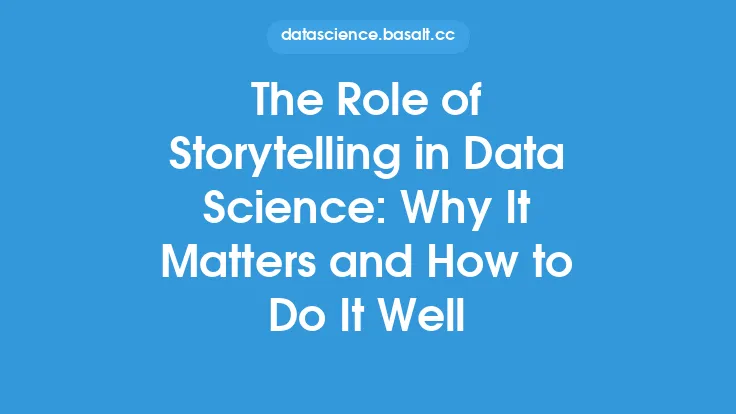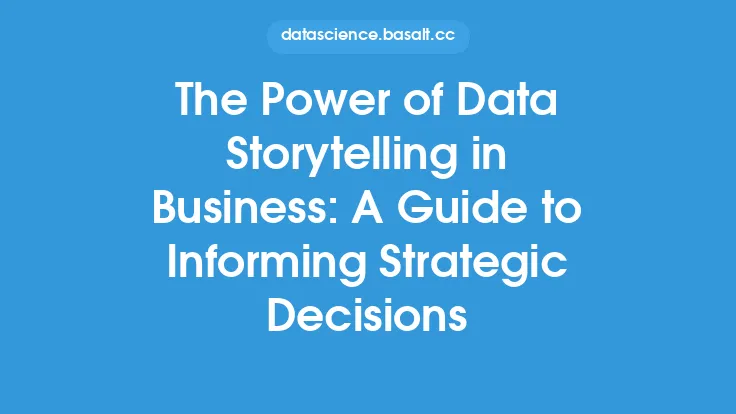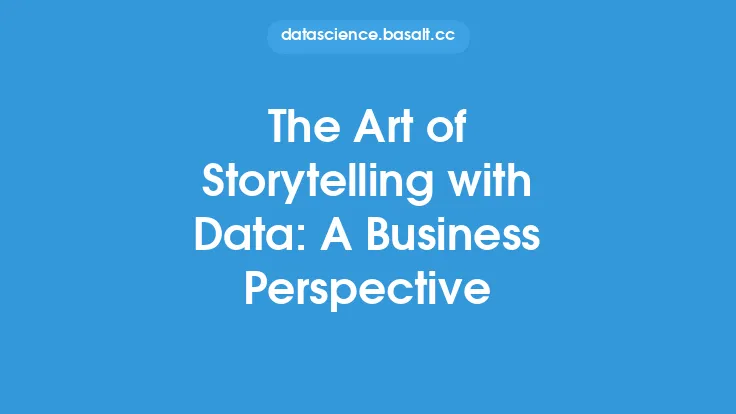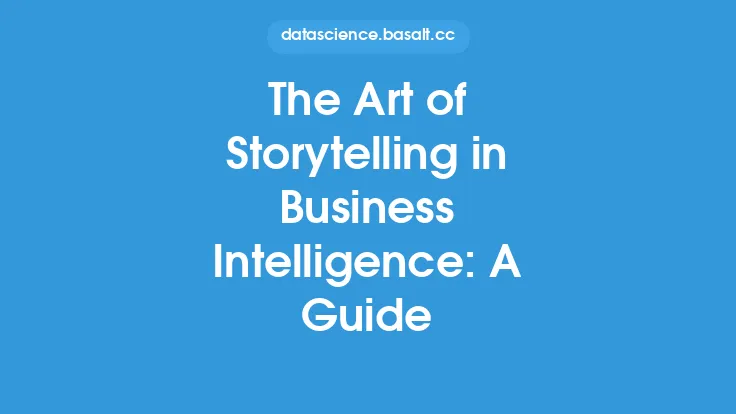In today's data-driven business landscape, the ability to effectively communicate insights and trends is crucial for informing strategic decisions, engaging stakeholders, and persuading audiences. Data storytelling has emerged as a powerful tool for businesses to convey complex information in a clear and compelling manner. By combining data analysis, visualization, and narrative techniques, organizations can create engaging stories that resonate with their audience and drive meaningful action.
Introduction to Data Storytelling
Data storytelling is the process of extracting insights and meaning from data and presenting them in a way that is easy to understand and relatable. It involves using data visualization, statistical analysis, and narrative techniques to create a story that communicates the key findings and implications of the data. Effective data storytelling requires a deep understanding of the data, the audience, and the message being conveyed. It is a skill that requires both technical expertise and creative flair, as well as the ability to distill complex information into a clear and concise narrative.
The Benefits of Data Storytelling in Business
The benefits of data storytelling in business are numerous. By presenting data in a clear and compelling manner, organizations can improve decision-making, enhance communication, and drive business outcomes. Data storytelling can help businesses to identify trends and patterns, anticipate opportunities and risks, and make informed strategic decisions. It can also facilitate collaboration and engagement among stakeholders, including employees, customers, and investors. Furthermore, data storytelling can be used to persuade and influence audiences, whether it's to drive sales, promote a new product or service, or build brand awareness.
Key Elements of Effective Data Storytelling
Effective data storytelling requires several key elements, including a clear and concise narrative, engaging visuals, and interactive elements. The narrative should be structured around a central theme or message, with a clear beginning, middle, and end. The visuals should be used to illustrate key points and trends, and to help the audience understand complex information. Interactive elements, such as filters, drill-downs, and animations, can be used to enhance engagement and exploration. Additionally, effective data storytelling requires a deep understanding of the audience and their needs, as well as the ability to tailor the message and presentation to their level of understanding and interest.
Data Visualization Techniques
Data visualization is a critical component of data storytelling, as it provides a powerful way to communicate complex information in a clear and concise manner. There are many different data visualization techniques that can be used, including charts, graphs, maps, and tables. Each technique has its own strengths and weaknesses, and the choice of technique will depend on the nature of the data, the message being conveyed, and the audience. For example, bar charts and line graphs are often used to show trends and patterns over time, while scatter plots and heat maps are used to show relationships and correlations between variables. Maps and geospatial visualizations are used to show spatial patterns and trends, while tables and treemaps are used to show detailed data and hierarchies.
Statistical Analysis and Modeling
Statistical analysis and modeling are also essential components of data storytelling, as they provide a way to extract insights and meaning from data. Statistical techniques, such as regression analysis and hypothesis testing, can be used to identify trends and patterns, and to test hypotheses and assumptions. Machine learning and predictive modeling can be used to forecast future outcomes and to identify opportunities and risks. Data mining and text analysis can be used to extract insights from large datasets and to identify patterns and trends in unstructured data. Additionally, statistical modeling can be used to simulate scenarios and to predict the outcomes of different courses of action.
Best Practices for Data Storytelling
There are several best practices that can be used to ensure effective data storytelling, including keeping the narrative simple and focused, using engaging visuals and interactive elements, and providing context and background information. It's also important to know the audience and to tailor the message and presentation to their level of understanding and interest. Additionally, it's essential to be transparent and honest about the data and methods used, and to provide opportunities for feedback and discussion. Finally, effective data storytelling requires a willingness to experiment and try new things, as well as a commitment to continuous learning and improvement.
Common Challenges and Pitfalls
Despite the many benefits of data storytelling, there are several common challenges and pitfalls that can arise. One of the most significant challenges is the difficulty of communicating complex information in a clear and concise manner. This can be particularly challenging when dealing with technical or specialized audiences, who may have different levels of understanding and expertise. Another challenge is the risk of misinterpreting or misrepresenting the data, which can lead to incorrect conclusions and decisions. Additionally, data storytelling can be time-consuming and resource-intensive, particularly when dealing with large and complex datasets. Finally, there is the risk of information overload, which can occur when too much data is presented, or when the data is not properly filtered or prioritized.
Future Directions and Trends
The field of data storytelling is constantly evolving, with new technologies and techniques emerging all the time. One of the most significant trends is the increasing use of artificial intelligence and machine learning to automate and enhance data storytelling. Another trend is the growing importance of data visualization and interactive elements, which are being used to create more engaging and immersive experiences. Additionally, there is a growing recognition of the importance of storytelling and narrative in data communication, and a increasing focus on the use of data storytelling to drive business outcomes and decision-making. Finally, there is a growing need for data storytellers to be able to communicate complex information in a clear and concise manner, and to be able to tailor their message and presentation to different audiences and stakeholders.





